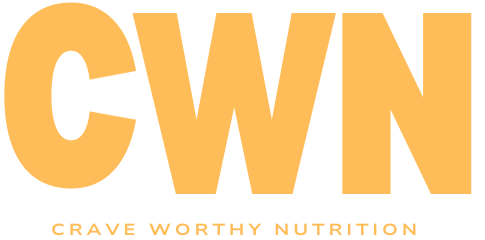
Looking for ways to keep your diet tasty and satisfying without the extra calories?
Cottage cheese is a hidden gem in the world of weight-loss foods!
It’s packed with protein, low in calories, and incredibly versatile.
In this post, we’ll share some of the best low-calorie cottage cheese recipes that are perfect for any meal of the day.
These recipes will help keep you full, provide essential nutrients, and, most importantly, they’re easy to make and delicious!
Why Cottage Cheese Is Great for Weight Loss
1. High Protein, Low-Calorie Content
Protein plays a crucial role in weight management by increasing satiety, reducing appetite, and preserving lean muscle mass during calorie restriction.
Cottage cheese stands out as a high-protein, low-calorie food that helps you feel full for longer periods, ultimately reducing the urge to overeat.
A typical 1/2 cup serving of cottage cheese contains around 12 to 15 grams of protein with only 80 to 100 calories, depending on whether it’s full-fat, low-fat, or fat-free.
- Protein’s Role in Weight Loss: Studies have shown that high-protein diets can boost metabolism, curb cravings, and promote fat loss while preserving lean body mass. When you consume cottage cheese, its protein content releases slowly, providing lasting energy and keeping hunger at bay.
- Calorie-Conscious Choice: Compared to many high-fat and calorie-dense cheeses, cottage cheese offers a lighter alternative with similar benefits, making it ideal for those seeking to reduce their overall caloric intake.
2. Rich in Nutrients
Cottage cheese isn’t just a source of protein; it also delivers essential vitamins and minerals that contribute to overall health and weight loss success.
- Calcium for Bone Health: Cottage cheese is a good source of calcium, which supports bone health and plays a role in metabolism regulation. Studies suggest that adequate calcium intake may assist in fat loss by promoting the breakdown of fat cells and preventing fat accumulation.
- B Vitamins for Energy: The B vitamins found in cottage cheese (such as riboflavin and vitamin B12) are critical for energy production and proper metabolic function. These vitamins help convert food into energy, ensuring your body has the fuel it needs to stay active and burn calories efficiently.
- Phosphorus and Selenium: Cottage cheese also contains phosphorus, which works with calcium to maintain strong bones, and selenium, an antioxidant that supports immune health and may aid in protecting against oxidative stress.
3. Low in Carbohydrates
For those following low-carb or ketogenic diets, cottage cheese can be a go-to option.
It’s naturally low in carbohydrates, with about 3-6 grams per serving, making it suitable for those who want to limit their carb intake while still enjoying a filling and nutritious food.
- Suitable for Keto and Low-Carb Diets: Cottage cheese can be combined with other low-carb foods, such as leafy greens, nuts, and seeds, to create satisfying meals that fit within a low-carb eating plan.
4. Versatility in the Kitchen
One of the greatest advantages of cottage cheese is its versatility.
Whether you prefer sweet or savory, cottage cheese can easily be adapted to suit any meal or snack, making it a practical choice for weight loss.
- Sweet Options: Cottage cheese can be paired with fruits, honey, or cinnamon for a healthy breakfast or dessert option. Try mixing it with berries for a nutrient-dense, low-calorie treat.
- Savory Options: For those who prefer savory flavors, cottage cheese can be combined with vegetables, herbs, or used as a topping on toast, making it a versatile addition to salads, wraps, and even main dishes like lasagna.
- Easy Meal Prep: Its convenience and flexibility make it easy to prepare meals and snacks in advance, ensuring you have healthy options readily available when hunger strikes.
5. Slow-Digesting Casein Protein
Cottage cheese is rich in casein protein, which digests slowly in the stomach.
This slow digestion rate can help you feel fuller for longer, making it an excellent evening snack or part of a pre-bedtime meal for those looking to curb late-night hunger.
- Benefits of Casein: The slow absorption of casein protein provides a steady release of amino acids, which can be beneficial for muscle recovery and maintenance during weight loss. Eating cottage cheese before bed can prevent overnight muscle breakdown and help preserve muscle mass while dieting.
6. Supports Muscle Building and Fat Loss
Maintaining muscle mass is essential during weight loss to keep metabolism high.
The high protein content in cottage cheese makes it an excellent choice for those who are combining diet with exercise, especially strength training.
By providing essential amino acids, cottage cheese supports muscle repair, growth, and retention, which is key for long-term weight loss success.
7. Budget-Friendly and Accessible
Compared to other high-protein options like Greek yogurt, meat, or protein supplements, cottage cheese is an affordable choice that is widely available in most grocery stores.
This makes it an accessible option for individuals on a budget or those who prefer simple, wholesome foods.
8. Low-Fat and Nonfat Options
For those focused on calorie reduction, low-fat and nonfat varieties of cottage cheese are widely available.
These options offer all the protein and nutrients with even fewer calories, making it easier to stick to a calorie deficit without feeling deprived.
In Summary: Cottage cheese is a nutritional powerhouse for weight loss due to its high protein content, nutrient density, versatility, and accessibility.
Incorporating it into your diet can help you manage your weight, boost metabolism, and support muscle maintenance, all while enjoying a variety of delicious meals and snacks.
Low-Calorie Cottage Cheese Recipes
1. Cottage Cheese & Berry Breakfast Bowl

Servings: 2
Prep Time: 5 minutes
Course: Breakfast
Cuisine: American
Keywords: cottage cheese recipes, low-calorie breakfast, high protein
Calories: 150 per serving
Ingredients
- 1 cup cottage cheese
- 1/2 cup mixed fresh berries (strawberries, blueberries, raspberries)
- 1 tbsp chia seeds
- 1 tsp honey (optional)
Equipment
- Small bowls
- Measuring spoons
Instructions
- Divide the cottage cheese between two bowls.
- Top each bowl with fresh berries, chia seeds, and a drizzle of honey, if desired.
- Enjoy immediately!
Nutritional Info
- Protein: 15g
- Fat: 3g
- Carbohydrates: 14g
- Fiber: 4g
Recipe Summary
A quick, refreshing, and high-protein breakfast bowl perfect for busy mornings.
This bowl combines the creaminess of cottage cheese with the sweetness of berries and crunch of chia seeds for a balanced meal.
Tips
- Use frozen berries for a budget-friendly option.
- Add a sprinkle of granola for extra fiber.
Buy chia seeds here (Amazon link)
2. Savory Cottage Cheese & Veggie Wrap

Servings: 1
Prep Time: 10 minutes
Course: Lunch
Cuisine: Mediterranean
Keywords: cottage cheese wrap, healthy lunch, weight loss
Calories: 220 per serving
Ingredients
- 1 whole-grain tortilla
- 1/2 cup cottage cheese
- 1/4 cup diced cucumber
- 1/4 cup diced tomatoes
- 1 handful fresh spinach
- Salt and pepper to taste
Equipment
- Cutting board
- Knife
- Measuring cups
Instructions
- Lay the tortilla flat and spread cottage cheese in the center.
- Layer diced cucumber, tomatoes, and spinach on top.
- Season with salt and pepper, then wrap tightly.
- Slice in half and serve.
Nutritional Info
- Protein: 12g
- Fat: 5g
- Carbohydrates: 25g
- Fiber: 5g
Recipe Summary
This wrap is a satisfying, low-calorie lunch that offers a fresh, crunchy combination of vegetables and creamy cottage cheese in a whole-grain wrap.
Tips
- Add sliced avocado for a boost of healthy fats.
Buy whole-grain tortillas here (Amazon link)
3. Cottage Cheese Protein Pancakes

Servings: 2
Prep Time: 5 minutes
Cook Time: 10 minutes
Course: Breakfast
Cuisine: American
Keywords: cottage cheese pancakes, high protein breakfast
Calories: 180 per serving
Ingredients
- 1/2 cup cottage cheese
- 1/2 cup oats
- 2 egg whites
- 1 tsp vanilla extract
- 1/2 tsp baking powder
Equipment
- Blender
- Nonstick skillet
- Spatula
Instructions
- Blend all ingredients until smooth.
- Heat a nonstick skillet over medium heat and pour batter to form pancakes.
- Cook for 2-3 minutes on each side, until golden brown.
- Serve with fresh fruit or a small drizzle of honey.
Nutritional Info
- Protein: 15g
- Fat: 3g
- Carbohydrates: 20g
- Fiber: 3g
Recipe Summary
Fluffy, protein-packed pancakes that are low in calories and perfect for kick-starting your day with energy.
Tips
- Use a small amount of coconut oil spray to keep the pancakes from sticking.
Buy nonstick skillet here (Amazon link)
Tips for Including Cottage Cheese in Your Diet
1. Control Portions for Maximum Benefit
While cottage cheese is low in calories and high in protein, portion control is still important for effective weight management.
Consider sticking to a serving size of ½ to 1 cup, depending on your nutritional needs and calorie goals.
This ensures you’re reaping the benefits of the protein and nutrients without consuming too many calories.
- Tip: Pre-portion your cottage cheese into small containers for a grab-and-go snack or quick addition to meals, helping to prevent overeating.
2. Pair with Fiber-Rich Foods
Pairing cottage cheese with high-fiber foods is an excellent way to boost satiety and add more nutrients to your meals.
Fiber slows down digestion, making you feel full for longer, which can help prevent mindless snacking.
- Pairing Ideas:
- Top cottage cheese with fresh or frozen berries, such as blueberries, strawberries, or raspberries.
- Add diced vegetables like cucumber, bell peppers, or tomatoes for a crunchy salad or dip.
- Use whole-grain bread or wraps to make high-protein sandwiches and wraps.
3. Use as a Topping or Filling
Cottage cheese can serve as a topping or filling for a variety of dishes.
It adds a creamy texture and a boost of protein without a lot of added calories.
- Ideas for Toppings:
- Use cottage cheese as a topping for baked potatoes, adding protein and creaminess instead of butter or sour cream.
- Add a dollop of cottage cheese on your morning oatmeal or overnight oats for a protein-rich twist.
- Spread cottage cheese on toast or crackers and sprinkle with herbs, spices, or fruit for a quick snack.
4. Experiment with Sweet and Savory Combinations
Cottage cheese is versatile enough to work in both sweet and savory dishes.
If you prefer sweet flavors, mix it with fruits, honey, or a sprinkle of cinnamon.
For savory dishes, combine cottage cheese with herbs, spices, and vegetables.
- Sweet Options:
- Mix with diced pineapple, apples, or mango for a tropical fruit bowl.
- Blend with honey, cinnamon, and chopped nuts for a delicious and healthy dessert alternative.
- Add cottage cheese to smoothies for a creamy, high-protein shake.
- Savory Options:
- Combine with chopped olives, cucumbers, and a sprinkle of dill for a Mediterranean-inspired snack.
- Stir into scrambled eggs or use as a filling for omelets.
- Add cottage cheese to pasta dishes, mixing it with tomato sauce for a creamy, protein-packed base.
5. Blend into Smoothies and Dips
Cottage cheese can easily be blended into smoothies and dips, adding a creamy texture and protein boost without the need for extra fats.
- Smoothies: Blend cottage cheese with fruits, milk or a dairy alternative, and a touch of sweetener for a high-protein smoothie. The texture becomes silky and creamy, making it a great substitute for yogurt or milk.
- Dips: Blend cottage cheese with herbs, garlic, lemon juice, and spices to create a high-protein dip that pairs well with raw veggies, crackers, or as a sandwich spread.
6. Incorporate into Baked Goods
Cottage cheese can be used in baking to add moisture, texture, and a protein boost.
It works well in muffins, pancakes, breads, and more.
- Baking Ideas:
- Substitute part of the butter or oil with cottage cheese in baked goods to reduce fat while maintaining moisture.
- Use cottage cheese in protein-rich pancakes, waffles, or even cheesecakes.
- Blend into batters for added protein and creaminess.
7. Try Low-Fat and Nonfat Varieties
Opting for low-fat or nonfat versions of cottage cheese can help you cut down on overall calorie and fat intake while still getting plenty of protein and nutrients.
If you prefer full-fat cottage cheese, you can still enjoy it in moderation for a creamier texture and richer flavor.
- Tip: Experiment with different brands and fat levels to find the type of cottage cheese that best fits your taste preference and dietary goals.
8. Incorporate into Meal Prep
Cottage cheese is a great addition to meal prep plans, as it keeps well in the refrigerator and can be used in a wide range of meals and snacks.
- Meal Prep Tips:
- Make cottage cheese bowls with different fruit or veggie toppings for a week’s worth of quick breakfasts or snacks.
- Prepare cottage cheese-based salads or wraps in advance and store them in individual containers.
- Add cottage cheese to pre-made smoothie bags for easy blending.
9. Use as a Substitute in Recipes
Cottage cheese can serve as a substitute for higher-calorie ingredients, making it an excellent swap for those looking to cut back on fat and calories without sacrificing flavor or texture.
- Substitution Ideas:
- Replace ricotta cheese with cottage cheese in lasagna or stuffed shells for a lower-calorie option.
- Use as a substitute for sour cream in dips, baked potatoes, and casseroles.
- Mix with mashed potatoes to reduce the need for butter or heavy cream while adding protein.
10. Add Flavor with Herbs, Spices, and Sauces
While cottage cheese is mild, it can be easily flavored to suit your taste.
Experimenting with different seasonings, sauces, and condiments can keep your meals exciting and flavorful.
- Flavor Ideas:
- Add fresh herbs like chives, basil, or cilantro for a burst of flavor.
- Sprinkle with garlic powder, smoked paprika, or crushed red pepper flakes for a spicy kick.
- Drizzle with hot sauce, soy sauce, or balsamic vinegar for a tangy twist.
11. Snack Smart
Keep cottage cheese as a handy snack option to fight cravings and boost protein intake throughout the day.
- Snack Combos:
- Enjoy with sliced apple and a sprinkle of cinnamon.
- Serve with celery sticks or bell pepper slices for a crunchy, satisfying snack.
- Combine with a small serving of nuts or seeds for added healthy fats and crunch.
By incorporating these tips into your diet, cottage cheese can become a staple ingredient that supports weight loss, satisfies hunger, and offers a variety of delicious and nutritious meals and snacks.
Whether you enjoy it sweet, savory, or blended, there’s always a new way to make cottage cheese work for your goals!
Understanding How to Choose the Best Cottage Cheese

With so many options available at the grocery store, choosing the right type of cottage cheese can make a big difference in your overall health, taste preferences, and dietary goals.
Here’s what you should know when selecting the best cottage cheese for your needs:
1. Check the Fat Content
Cottage cheese is available in full-fat, low-fat, and fat-free varieties.
The choice depends on your personal preference, dietary goals, and taste.
Here’s a quick overview of what each option offers:
- Full-Fat: Provides a creamier texture and richer flavor, but comes with more calories and fat. Best for those who prefer a more satisfying taste and don’t mind a few extra calories.
- Low-Fat (2%): Offers a middle ground with reduced fat and calories, but still retains a satisfying texture and taste.
- Fat-Free: The lowest-calorie option, but may have a slightly drier and less creamy texture. Ideal for those strictly watching their fat and calorie intake.
Tip: Mix fat-free cottage cheese with a little bit of full-fat cottage cheese for a balance of flavor and texture.
2. Examine the Sodium Content
Many cottage cheese products are high in sodium, which may not be ideal for those on a low-sodium diet or those looking to reduce bloating and water retention.
- Low-Sodium Options: Check labels for “low sodium” or “reduced sodium” varieties if you’re trying to limit your salt intake. Some brands offer cottage cheese with significantly less sodium without sacrificing flavor.
- Rinsing Tip: For standard cottage cheese, you can reduce sodium by placing it in a fine mesh strainer and rinsing it with cold water before consuming.
3. Look for Added Ingredients
Some brands of cottage cheese may contain additives, stabilizers, or added sugars, especially in flavored varieties.
Always read the ingredient list to ensure you’re getting a product that aligns with your health goals.
- Avoid Sweetened Varieties: Flavored cottage cheese may contain added sugars and artificial ingredients. Opt for plain varieties and add your own natural sweeteners or fruits for flavor.
- Fewer Ingredients = Better: A simple ingredient list with milk, cream, and salt is often the best choice. Avoid brands that have too many preservatives or artificial thickeners.
4. Organic and Grass-Fed Options
For those concerned about the quality of their dairy, organic and grass-fed cottage cheese can be a good option.
Organic cottage cheese comes from cows that haven’t been treated with growth hormones or antibiotics, while grass-fed varieties may offer higher levels of omega-3 fatty acids and a better nutrient profile.
- Organic Certification: Look for the USDA Organic label if you prefer organic dairy.
- Grass-Fed Labels: Products labeled “grass-fed” often come from cows that were raised primarily on grass, which can impact the nutritional composition of the cottage cheese.
5. Consider Lactose-Free Varieties
If you have lactose intolerance or sensitivity, you can still enjoy the benefits of cottage cheese.
Many brands now offer lactose-free options that retain the texture and taste of regular cottage cheese without causing digestive discomfort.
- Tip: Lactose-free cottage cheese can be used in the same way as regular cottage cheese in recipes and snacks.
6. Flavor and Texture Preferences
Not all cottage cheese tastes the same.
The texture and flavor can vary by brand and production method, so it’s worth trying different options to find your preferred brand.
Some people prefer small-curd for a smoother texture, while others enjoy large-curd cottage cheese for a more distinct bite.
- Pro Tip: Try blending cottage cheese for a smoother consistency if you dislike the curds but want the nutritional benefits.
7. Cost-Effectiveness
Cottage cheese is often an affordable source of protein compared to other options like meat or Greek yogurt.
To maximize your budget:
- Buy in Bulk: Larger containers can be more cost-effective if you consume cottage cheese regularly.
- Store Properly: Cottage cheese is perishable, so store it in the refrigerator and consume it within the “use by” date to minimize waste.
Choosing the right cottage cheese can elevate your weight loss journey by providing a delicious, versatile, and nutrient-dense addition to your diet.
By considering factors such as fat content, sodium levels, additives, and personal preferences, you can make informed choices that best support your health and taste goals.
Happy eating!
Conclusion

With these low-calorie cottage cheese recipes, you have plenty of ways to incorporate this nutritious, high-protein food into your weight-loss plan.
These dishes are simple, versatile, and satisfyingly delicious, making them easy to enjoy any time of day.
Try these recipes and discover just how tasty weight-loss meals can be!
Did you try one of these recipes?
Share your favorite or any creative twists in the comments below!
Frequently Asked Questions
1. Can cottage cheese support weight loss efforts?
Absolutely!
Cottage cheese is high in protein, low in calories, and has a high satiety index, which helps you feel full and satisfied.
2. How much cottage cheese should I eat daily for weight loss?
Aim for about ½ to 1 cup of cottage cheese per serving, depending on your calorie needs.
3. Can I substitute cottage cheese in other recipes?
Yes, cottage cheese can be used in place of ricotta in lasagna, as a substitute for Greek yogurt in smoothies, or even in place of mayonnaise in dips.


